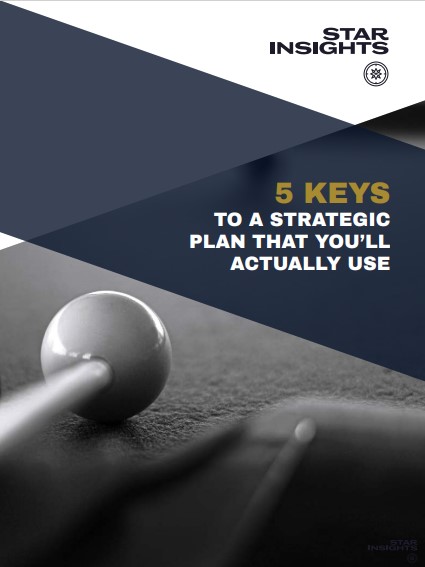Committee For Greater LA
Exceptional Times Call For Exceptional Action
Developing, Facilitating, and Guiding The Committee For Greater LA

The Committee for Greater LA was founded at the beginning of the COVID-19 pandemic. They knew that the impact of the pandemic would not be equitable, and so a coalition of leaders from business, philanthropy, and community organizations came together to think about what Southern California’s recovery needed to look like to ensure a long-term, equitable recovery.

“When I was approached to chair the Committee for Greater Los Angeles, I had a condition. I knew that it would be almost impossible to do this work, particularly during that pandemic via Zoom, without a strong facilitator and without a very well organized group of individuals whose job it was to keep us on task and to ensure that all voices would be heard. And I knew Star Insights was great at doing this work because I had used them in the past.”
Miguel Santana
President & CEO, Weingart Foundation
Chair, Committee for Greater LA
Miguel Santana
President & CEO,
Weingart Foundation
Chair, Committee for Greater LA
Working in partnership with USC’s Equity Research Institute and UCLA’s Luskin School of Public Affairs, the goal of the Committee was to produce a report that functioned as a snapshot of Los Angeles County before the pandemic, to provide a new vision and framework for decision making around recovery efforts.
Establishing Trust
As a brand new coalition, forming the Committee itself required significant effort. While they had a vision, questions around their purpose and how they wanted to achieve it still needed to be answered.
“There was a lot of coordinating, a lot of pulling different people together and having conversations with folks to make sure they understood what the purpose of this was. Over the course of the summer, it became a process of working through all of these specific issues in order to produce a report that was informed by people’s experiences.” – Robin Engel
The first goal was to create a level of trust and communication between all parties involved with the report. Building trust and engagement up front was important, as was creating a forum where the leaders could come together and focus on the work that mattered most.
“We needed to talk about what we’re feeling, what we’re thinking, what’s important to wrestle with as we looked pandemic impacts, and then give people a platform to talk about what’s most important to them. So that’s where the work started, and we facilitated conversations every week for 23 weeks to make sure that we understood what these problems look and feel like for someone who’s living them – and to offer recommendations on how to make it better.” – Robin Engel
The Technical Backbone
Pulling these parties together was one thing, but the circumstances around the Committee’s formation made forming partner relationships particularly challenging. Coming together in April 2020, in the early days of the pandemic, when the entire world had been turned upside down, was particularly challenging.
Pandemic restrictions meant that meeting partners face-to-face was not a possibility. It also meant large gatherings to get community input and feedback were off the table, as well. Which made it essential that the steering Committee embraced its role and provided thoughtful guidance and support to its academic partners while they did the research and assembled the necessary data.

“Star Insights really created the backbone to make sure that all of the technical work was getting done. That was particularly important because the way we would normally meet had changed. All of us were discovering Zoom at the same time and navigating technology issues. We had to figure out how to do this in a way that was structured and accessible, while also allowing for this space where what was happening in our community, entered into our work in a way that was authentic and meaningful.”
Miguel Santana
President & CEO, Weingart Foundation
Chair, Committee for Greater LA
Miguel Santana
President & CEO,
Weingart Foundation
Chair, Committee for Greater LA
Ultimately, Star Insights facilitated twenty-three 90-minute Friday sessions in a row between partners, stakeholders, and invested parties to get everyone on the same page.
“They created technical processes so that the technical issues did not get in the way of the substantive issues. Sometimes the most important role is when the invisible hand is there to guide and support, so that you don’t have to worry about those things. And we didn’t have to.” – Miguel Santana
Changing Course
A key element of the report the Committee was producing was to get some data on what life before the pandemic really looked like. Despite media headlines painting a picture of a successful region, the Committee members knew that was only true for a few segments of LA. Examining this data and having this baseline would allow pandemic recovery efforts to focus on the most vulnerable populations and ensure that they were not left behind.
However, during the early phases of the report’s creation, George Floyd was murdered and protests around anti-black racism and racial injustice in the United States swept across the nation. Several Committee members asked to take an upcoming meeting to speak solely about these issues, and the Committee did.
“Some of our Committee members came to us and said, ‘How can we not talk about that in this space? How can our report not talk about anti-black racism in this country?’ And so we adapted. It became one of the foundations of our work, and the report centered on it more fully than we had anticipated on day one. This report became about so much more than the pandemic. It became about thinking about how the pandemic was situated in relation to all of the other issues that existed within LA County.” – Miguel Santana
Racial disparities in LA are undeniable, and so, while having a race and equity lens had always been part of the plan, these events moved that lens to the forefront. It became a cornerstone of the entire project — still aligned to the vision, but changing the scope drastically.
With project directives changing from week to week, if not day to day, flexibility and adaptation were key to this project’s success.
“They’re so nimble. We were able to adjust and adapt and evaluate along the way. We were constantly asking ourselves what can we do to be stronger; what can we do to present an even greater message; how can we be more inclusive? And it feels like you really have a partner in this.” – Miguel Santana
Evolving Beyond The Vision
While the scope and focus of the report changed, the goals of it did not. Published in September 2020, the report itself lays out a framework for the Los Angeles region coming out of the COVID-19 pandemic.
“What we found was pretty much exactly what we anticipated we would find — except it was much worse than I’d expected, particularly the health outcomes. African American and Latino communities were experiencing significant increases in getting sick and dying of COVID-19. By June 2020, you could literally see the disparate outcomes by Zip Code, and where you lived was the most significant factor in determining whether you were going to survive. Poor and marginalized communities really experienced the brunt of the [COVID-19] crisis.” – Miguel Santana
The report has set the stage for policy reforms, including specific recommendations for structural and system change to repair an unequal society. This includes ten guiding principles and recommendations, ranging from establishing high-speed internet as a civil right to a strategy to end homelessness in Los Angeles.

“If you’re looking for a consultant that’s going to basically tell you what to do, that’s not Star Insights. They’ll ask questions, they’ll give examples, they’ll facilitate, but part of their brilliance is that they help you really think through what the outcome is that you want to achieve. And then they help co-design the process to help you get there. Then they’re by your side as you’re doing the work.”
Miguel Santana
President & CEO, Weingart Foundation
Chair, Committee for Greater LA
Miguel Santana
President & CEO,
Weingart Foundation
Chair, Committee for Greater LA


